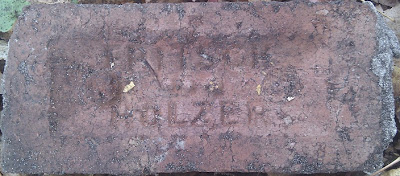As I traveled around researched for this blog, I came across lots of different bricks from makers all over the place. Here are some of the photo's collected over the course of this research. Any comments or news about them would be appreciated. Some of these pictures came from another blog on bricks, "Collecting Australian Bricks" but most are mine.
Hand Made Brick, Single Heart 19th Century, possibly John Hart form French Island or Corinella, Victoria
Hand Made Brick, Double Heart 19th Century
There were Auburn Brick Works in Melbourne, Sydney, Perth and America. Chances are that these are from Melbourne. 1909 to 1934.
Blackburn Brick Company 1892 - 1966
Brick and Pipe Industries. From 1959 to 1989
Bremer Brick Tile & Pottery Co, Dinmore Queensland 1886-
Builders Company later Glen Iris Brick
Charles Butler & Sons 1886-1966
D.H.B.W Dandenong
Excelsior (Could be any one of several)
Fritsch-Holzer
New Gamble Brick Company
Glen Iris Bricks
Glen Iris 1950
Glen Iris Royal Visit 1954
Glen Iris 1955
Glen Iris 1956 Melbourne Olympic Brick
Oakleigh Brick Company
Oakleigh Junction Brick Company
Oakleigh Black Brick
Lucknow Brick Works
Sale Brick
Sandhurst Brick
Selkirk Bricks Ballarat
Shepparton Brick, Shepparton
Spear Brick, Melbourne (pre City Bricks),
not to be confused with Speare, Sydney
not to be confused with Speare, Sydney
Stamford Brick 1958
State Brick Works, Wonthaggi, Victoria
(SCM was the State Coal Mines)
State Brickworks, New South Wales.














































